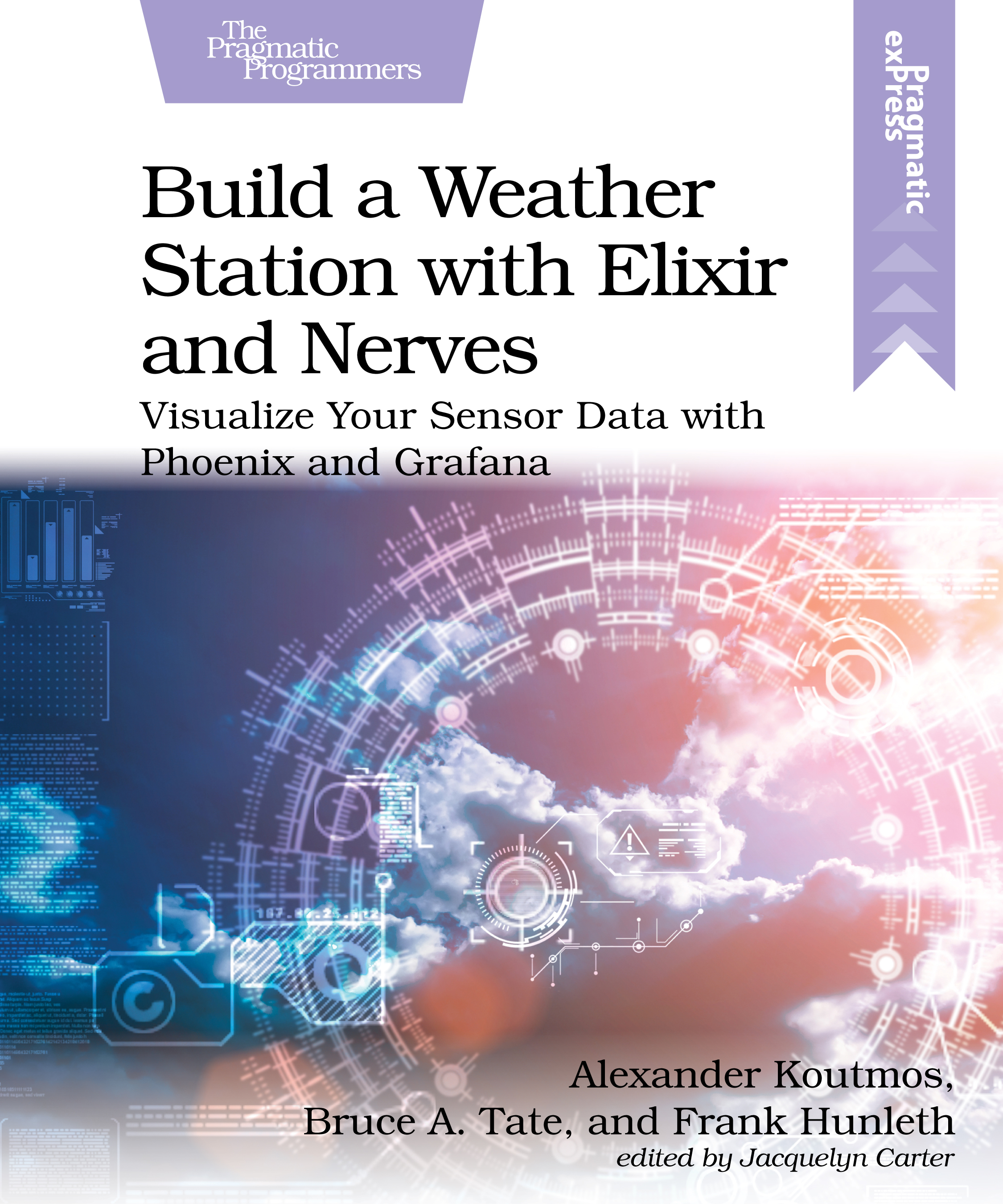Build a Weather Station with Elixir and Nerves
Visualize Your Sensor Data with Phoenix and Grafana
by: Alexander Koutmos, Bruce A. Tate, Frank Hunleth
| Published | 2022-01-12 |
|---|---|
| Internal code | passweather |
| Print status | In Print |
| Pages | 90 |
| User level | Intermediate |
| Keywords | elixir, nerves, microprocessor, diy, smart house, maker, single-board computer |
| Related titles | |
| ISBN | 9781680509021 |
| Other ISBN |
Channel epub: 9781680509472 Channel PDF: 9781680509489 Kindle: 9781680509458 Safari: 9781680509465 Kindle: 9781680509458 |
| BISACs | COM067000 COMPUTERS / Hardware / GeneralTEC008070 TECHNOLOGY & ENGINEERING / Electronics / MicroelectronicsTEC008070 TECHNOLOGY & ENGINEERING / Electronics / Microelectronics |
Highlight
The Elixir programming language has become a go-to tool for creating reliable, fault-tolerant, and robust server-side applications. Thanks to Nerves, those same exact benefits can be realized in embedded applications. This book will teach you how to structure, build, and deploy production grade Nerves applications to network-enabled devices. The weather station sensor hub project that you will be embarking upon will show you how to create a full stack IoT solution in record time. You will build everything from the embedded Nerves device to the Phoenix backend and even the Grafana time-series data visualizations.
Description
Elixir as a programming language has found its way into many different software domains, largely in part to the rock-solid foundation of the Erlang virtual machine. Thanks to the Nerves framework, Elixir has also found success in the world of embedded systems and IoT. Having access to all of the Elixir and OTP constructs such as concurrency, supervision, and immutability makes for a powerful IoT recipe. Find out how to create fault-tolerant, reliable, and robust embedded applications using the Nerves framework.
Build and deploy a production-grade weather station sensor hub using Elixir and Nerves, all while leveraging the best practices established by the Nerves community for structuring and organizing Nerves applications. Capture all of your weather station sensor data using Phoenix and Ecto in a lightweight server-side application. Efficiently store and retrieve the time-series weather data collected by your device using TimescaleDB (the Postgres extension for time-series data). Finally, complete the full stack IoT solution by using Grafana to visualize all of your time-series weather station data. Discover how to create software solutions where the underlying technologies and techniques are applicable to all layers of the project.
Take your project from idea to production ready in record time with Elixir and Nerves.
Contents and Extracts
- Introduction
- What You Will Build
- How to Read This Book
- Running the Code Exercises
- Online Resources
- Elixir and Nerves for IoT
- Wirelessly Reading Sensor Data
- Creating a Network-Enabled Sensor Hub Project
- Getting on to the Network
- Capturing Sensor Data
- Your Turn
- Aggregating Sensor Data
- Wrapping Sensors in GenServers
- Build the Firmware Project
- Managing the Lifecycle excerpt
- Your Turn
- Publishing Sensor Data
- Setting up Docker Compose
- Creating The Phoenix Application
- Publishing Metrics
- Your Turn
- Pulling it all Together
- Adding Grafana to Docker Compose
- Exploring the Data With SQL
- Creating a Weather Dashboard
- Your Turn
